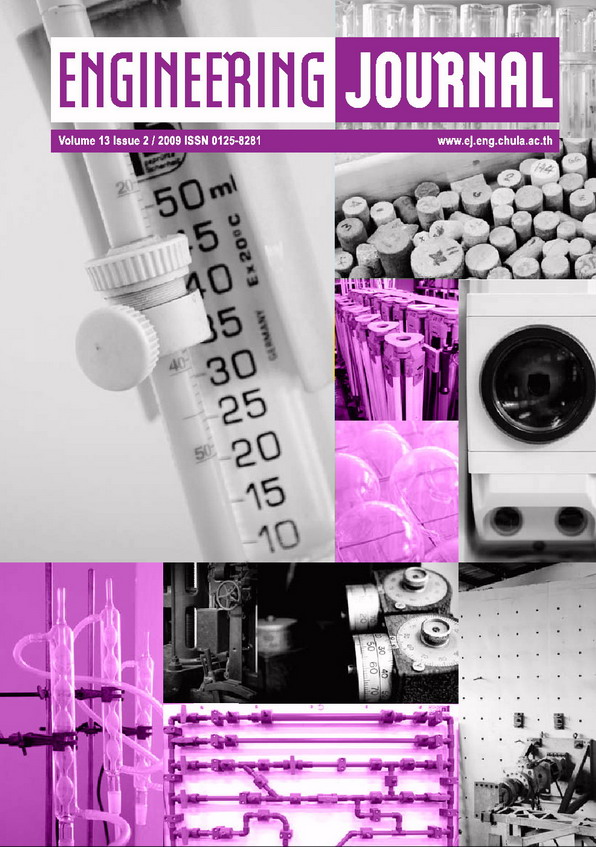Finite Element Method for Analysis of Conjugate Heat Transfer between Solid and Unsteady Viscous Flow
DOI:
https://doi.org/10.4186/ej.2009.13.2.43Keywords:
Conjugate heat transfer, finite element method, fractional four-step.Abstract
A fractional four-step finite element method for analyzing conjugate heat transfer between solid and unsteady viscous flow is presented. The second-order semi-implicit Crank-Nicolson scheme is used for time integration and the resulting nonlinear equations are linearized without losing the overall time accuracy. The streamline upwind Petrov-Galerkin method (SUPG) is applied for the weighted formulation of the Navier-Stokes equations. The method uses a three-node triangular element with equal-order interpolation functions for all the variables of the velocity components, the pressure and the temperature. The main advantage of the method presented is to consistently couple heat transfer along the fluid-solid interface. Four test cases, which are the lid-driven cavity flow, natural convection in a square cavity, transient flow over a heated circular cylinder and forced convection cooling across rectangular blocks, are selected to evaluate the efficiency of the method presented.
Downloads
Downloads

Authors who publish with Engineering Journal agree to transfer all copyright rights in and to the above work to the Engineering Journal (EJ)'s Editorial Board so that EJ's Editorial Board shall have the right to publish the work for nonprofit use in any media or form. In return, authors retain: (1) all proprietary rights other than copyright; (2) re-use of all or part of the above paper in their other work; (3) right to reproduce or authorize others to reproduce the above paper for authors' personal use or for company use if the source and EJ's copyright notice is indicated, and if the reproduction is not made for the purpose of sale.









